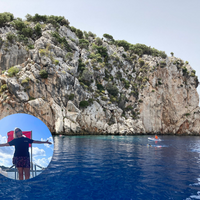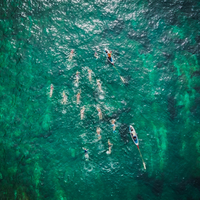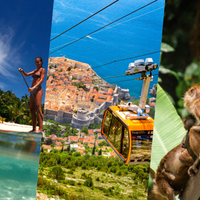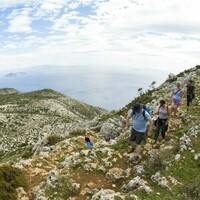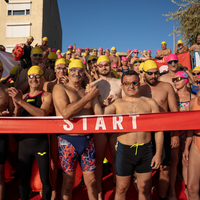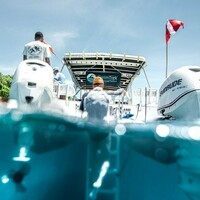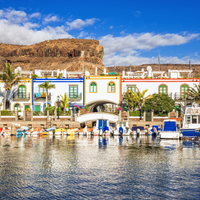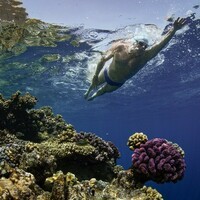Our team of world-class, qualified coaches here at SwimTrek know a thing or two about picking the right gear for a swim. We asked Head Coach, Shaun, his top tips on how to choose the right wetsuit for open water swimming...
I’m often asked about how to choose the 'Perfect Swimmer's Wetsuit' – whether it’s for someone new to open water swimming, preparing for an upcoming SwimTrek Holiday or a swimming event anywhere in the world. Whatever their swimming goal is, they are all looking for the right swimming wetsuit to achieve it in.
'When selected correctly, wetsuits can improve your body position, buoyancy and swimming speed by up to 10%...'
When selected correctly, wetsuits can improve your body position, buoyancy and swimming speed by up to 10%, as well as keep you warm allowing you to swim for longer!
A badly-fitting suit can cause chafing, stroke restriction and a more general feeling of restriction as well as general discomfort. So, it’s really important to get the fit right.
Wetsuits are made for all conditions, temperatures and seasons. And so, while you won’t find a single suit for all uses or environments, our Swim Shop stocks a hand-picked selection of highly functional brands and enough variety to prepare you for anything.
Our SwimTrek Coaching Camps take place in different locations around the world, from our Channel and Long Distance Training Camp and Marathon Swim Camps in Croatia, our Introduction to Open Water and Open Water Development Coaching Camps in Mallorca and our Open Water Development Camp in Hawaii.
On these camps (as well as pool training) the open water temperatures are warmer. SwimTrek Coaching at the National Swimming Centre at SeaLanes in Brighton, is much colder with winter 50-metre pool temperatures of about 19C and sea temperatures dipping below 10C when a warm wetsuit is a good choice.
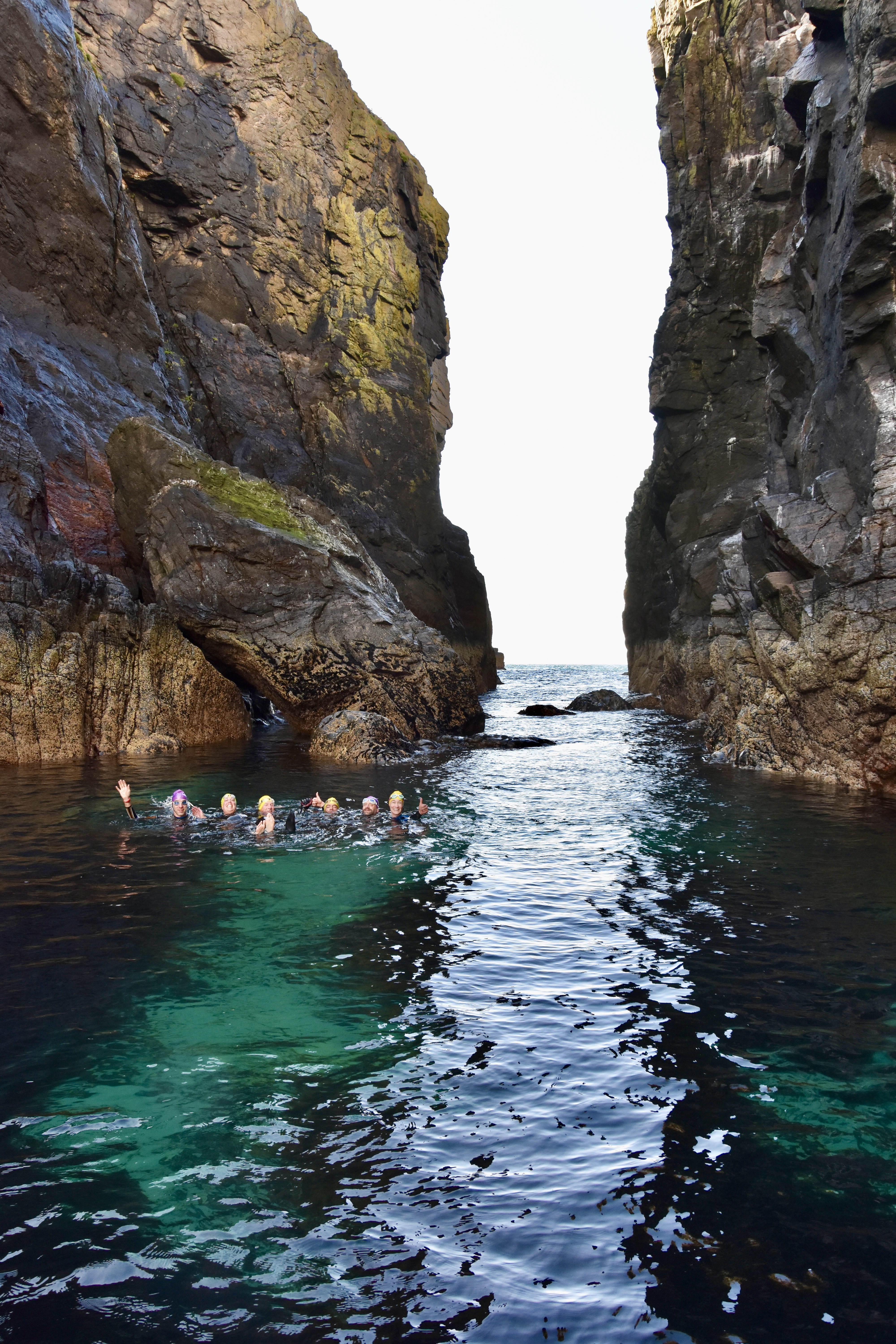
SwimTrek takes swimmers on adventures to all corners of the globe, from The Maldives to the Lake District. We dive into all waters: seas, rivers, lochs, tarns, lakes. We see wetsuits of all kinds, and, as conditions change, so to do the styles of neoprene on display. Thicker suits emerge for longer swims and colder waters. Thinner, more triathlon-specific suits are pulled out for shorter races. Discussions bounce back and forth about everything from the best shoulder material to neck band strangulation.
It’s our policy to always give you the option to choose whether or not you want to wear a wetsuit. However, if going skins isn’t your bag, we hope these tips will be of use, helping you to find the the right wetsuit you need to tackle open water.
Shaun's Top Tips
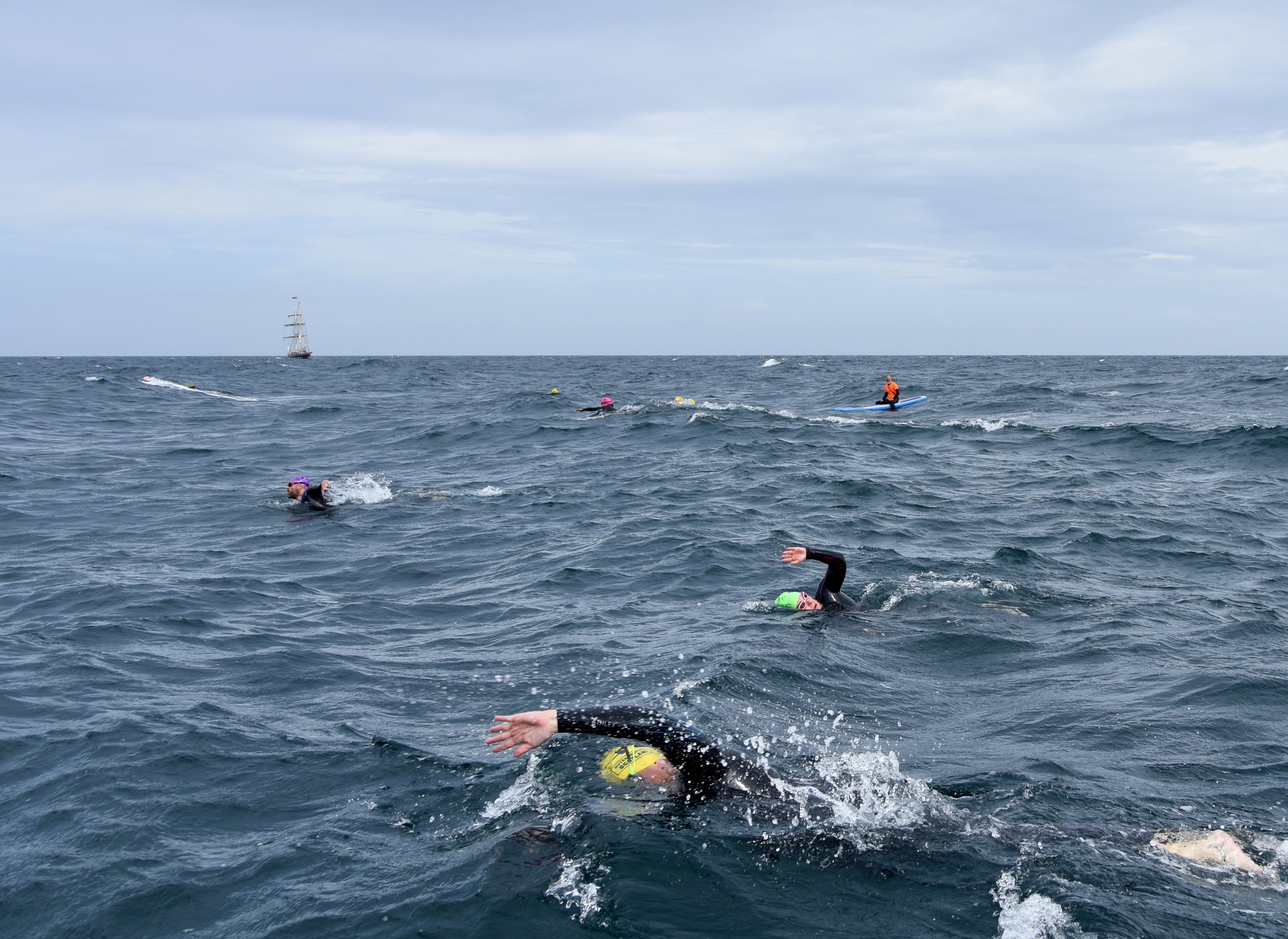
1) Buy a swimming specific wetsuit
There are a multitude of wetsuits on the market but not all of them are designed for swimming.
- The design, panelling and buoyancy of a swimming wetsuit is designed to improve your body position and reduce drag in the water.
- Swimming wetsuits have a lower and often softer neoprene neck which is important to allow you to comfortably rotate your head from side to side.
- With the more continuous motion of swimming, all over thickness of the wetsuit for warmth is not required. Instead, a thinner suit with carefully positioned panels allow more flexibility in areas such as the arms and legs and thicker panels for warmth on the and buoyancy.
- But, if the fit isn’t right they can be restrictive. And, swimming with a wetsuit does mean more kit to carry!
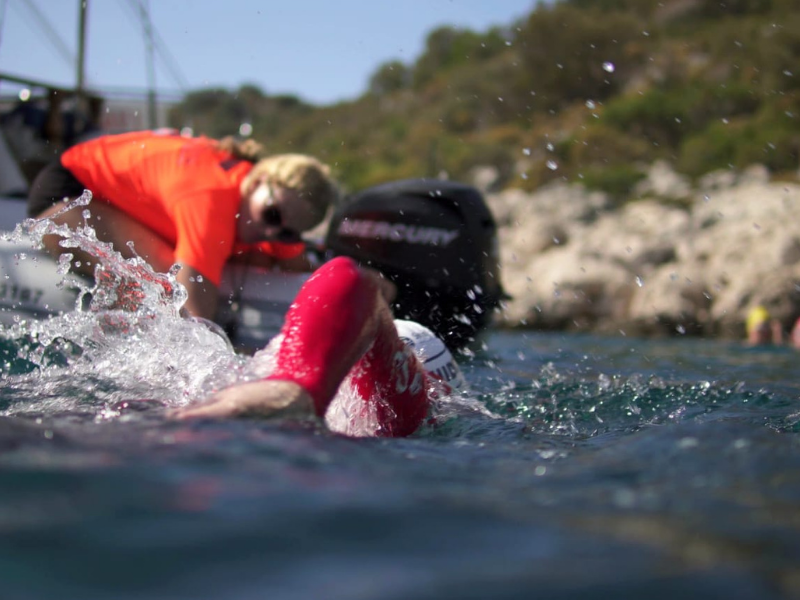
2) Try before you buy for the right fit
We all come in different shapes and sizes and different wetsuit brands have varied fits, so it is important to try a few on and see what works best for you.
- Take your time when trying a suit on.
- Make sure that you pull the legs up bit by bit and get the suit snug before putting the top half on. A common mistake is putting the top half on without pulling the legs up enough which causes tightness in your top half and restriction around the shoulders.
- Try on different wetsuit brands to see which fits you best. We stock suits from Aquasphere, Orca and Cressi. SwimTrek shop staff can advise on best fits for you.

3) What the ‘right fit’ feels like
If you’re not used to wearing a wetsuit then it may feel a bit strange and hard to know what the right fit feels like. The difference between your wetsuit feeling strange at first and not the right fit for you can be two separate things:
- The legs and sleeves will likely feel short, but this is how they are designed.
- Wetsuits may feel tight around your neck if you’re not used to them - different brands and styles have higher/lower necks so find what works for you.
- Suits should feel like they are gently compressing you all over.
- Although they should be tight, you should be able to stretch to your full stroke in it.
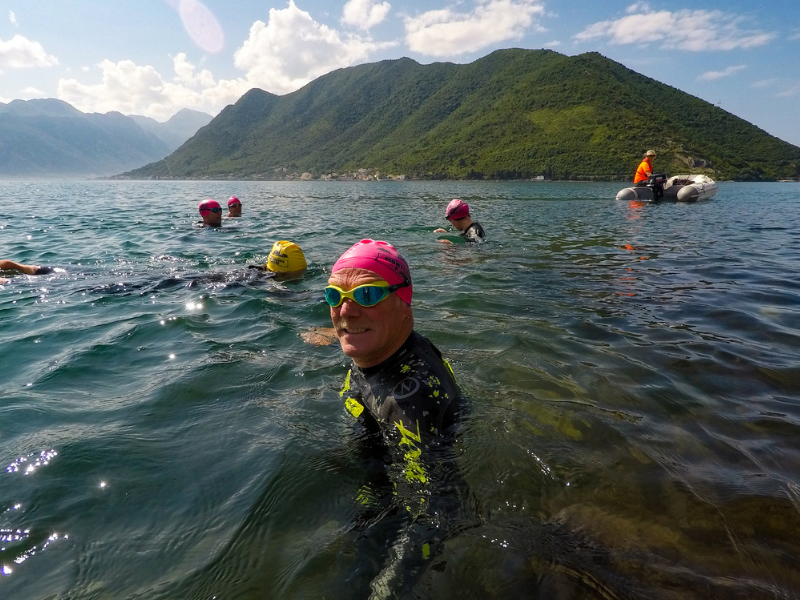
4) Wetsuit Styles
We stock many different styles, from neoprene shorts through to full arm and leg suits. Which suit you choose depends on your priorities: warmth, mobility and buoyancy.

Full wetsuits – 2M Suitable for 13-17C water temp
- The more of your skin that is covered, the warmer the suit will be.
- The thicker the suit, the warmer and more buoyant it will be, but it may feel more restrictive as it’s less stretchy.
We recommend:
- Aquasphere Pursuit Exclusive Offer - 30% off and free googles, now £239
- Aquasphere AquaSkin Full Suit £270
- Aquasphere Racer V3 Exclusive Offer - 30% off and free goggles, now £335
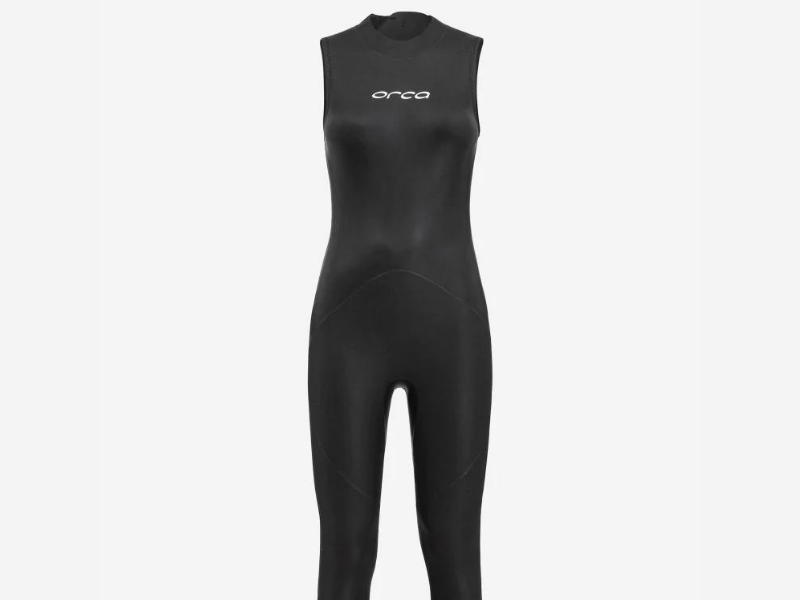
Sleeveless wetsuits – 2M suitable for 13-20C Water Temperature
- If you don’t like the feeling of restricted shoulders, try a sleeveless suit.
- These suits are also great for cooler pool swims
We recommend:
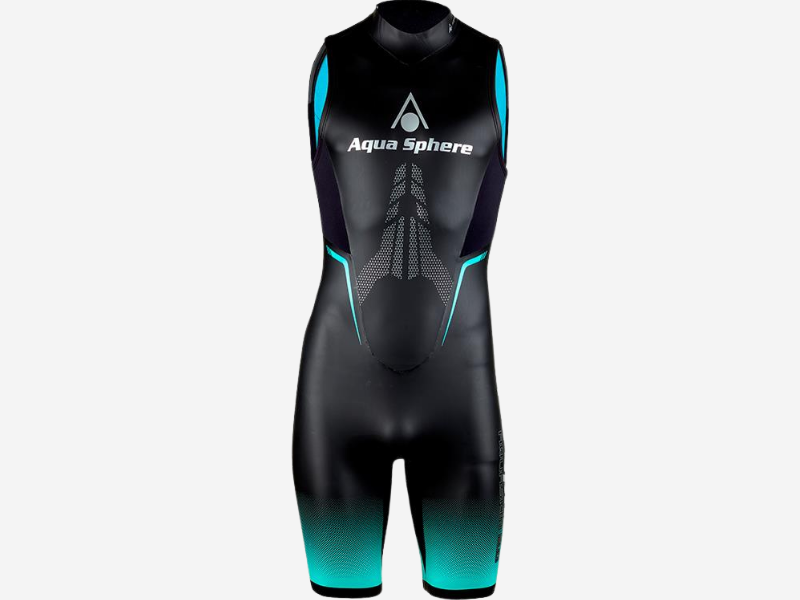
Shortie Suits – 2M Suitable for 19-22C water temperature
- If you don’t need the warmth of a full-length wetsuit, a shortie will keep your core warm whilst allowing you better freedom of movement while you swim
We recommend:
- Orca Open Water Sleeveless Shortie £99
- Orca Open Water Vitalis Shortie £149
- Aquasphere Aquaskin Shortie £162

Neoprene Costumes
- Again, great for a bit of extra warmth with the added benefit of great flexibility, these Neoprene Costumes offer great freedom of movement, whilst still keeping you warm.
We recommend:
- Orca Mantra Free Dive Swim Skin £119
- Cressi Termico Shortie Long Sleeve £119
- Cressi Termico Shortie Swimsuit £89.99
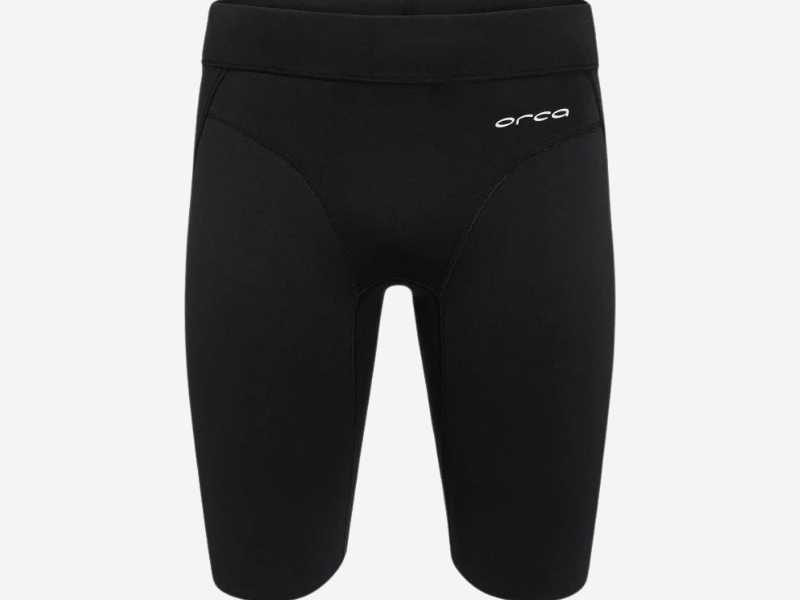
Neoprene Shorts – (1-2M 22-24C)
- These are also known as ‘Buoyancy Shorts’ for a reason. As well as a bit of extra warmth, neoprene shorts give a swimmer added buoyancy, lifting the hips in the open water or swimming pool, improving body position for better hydrodynamics.
We recommend:
- Orca Neoprene Jammer £54.95
- Aquasphere AquaSkin Shorts £126
Price
It's very important to get value for money, but not to scrimp too much if you want a suitable level of performance for endurance swimming. Mid-level suits tend to be the most popular. Entry-level suits start around £100, with very basic design, and then range up to mid range £270. While high-end constructions can cost up to around £600.
Finally, whichever suit you choose, something to remember is that they never feel great on dry land. However, once you get wet they are much more comfortable. And, like a new pair of trainers, will mould to your body over time as you use them more.
For more in depth information on choosing the right wetsuit for the water temperature for our SwimTrek Trips visit our Water Temperature And Wetsuit Guide...


